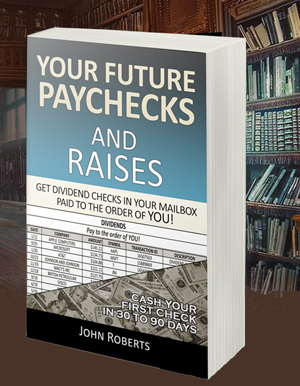Walmart Mexico Scandal – Protect Your Stock With Stop Losses

Let’s face it. Both professional and amateur investors will lose money on a stock from time to time. This can happen when a sudden bad news event surfaces about the company you are invested in.
Like the recent Walmart Mexico scandal.
It seems that people high up in the Walmart organization knew that bribes were being made to officials in Mexico to cut through the red tape to open new stores. This has put their competitors at a disadvantage.
And Walmart stock dropped suddenly on the news. Or a few years back when the Enron scandal broke. In that case the price of the stock ultimately dropped more than 90% — much more than 90%, actually. That’s a devastating loss.
Bt the difference is the professionals keep from turning a small loss into a big loss. They live top play another day.
And the way they limit their losses is with a technique called stop losses.
In order to set a stop loss, we actually decide up front when we buy a stock how much we are willing to lose before we throw in the towel and sell it.
This is the best time to do this because we have no money on the table yet, so we are more objective. Let me say that another way. When you have bought a stock, i.e. you have money on the table, it’s emotional. The idea here is to get the emotions out of the process before we buy the stock.
So let’s talk about stop losses. (Actually, we are going to use something called trailing stop losses, which we’ll discuss in a future post, but let’s get the basic stop loss concept down first).
Opinions very, but I think a good stop loss percent to use is 25%. This means if you invested $1000 in a stock, and it went down by $250, so it was worth only $750, you sell it and take the $250 loss.
Why 25% you ask? Well, some credible research and back testing has shown that stop losses in the 21% – 27% range have yielded the most efficient results as far as protecting investments.
Setting the stop losses too thin, say 10%, caused people to stop out of investments too often, only to see them turn around and go higher. And wider stop losses, say 40% to 50%, allowed too much loss before bailing out of a stock in a downward trend.
Simple enough, right? Let me caution you about that. Here’s another one of those, “it’s simple, but it ain’t easy,” things.
Why isn’t it easy?
Because you will want to hang on to that stock. You will think, well maybe it will come back up to $1000, and I won’t lose any money. Every molecule in your body will be screaming to hang on to that stock, and not take the 25% loss – because you just know it will come back up.
Don’t do it. Here’s what can happen.
The stock may go on down by 35%. You still have hope so you hang on. Then it’s down by 50% — now you’ve just got to hang on because you’ve lost half your money and you want to recover it.
Then it’s down 75%, and you are so depressed you don’t know what to do. It keeps going down. Now you’re down 90% so you think, well, I might as well keep it, I’ve lost most of my money.
You are correct about part of that. You have lost the money. You broke rule number 1 (rule number 2 also, come to think of it). Looking back on it, you really, really, really wish you had sold it when it was only down 25%, right? That 25% loss doesn’t look so bad now.
So don’t let this happen to you. Be smart, and if your stock goes down 25%, get out while you still have 75% left.
So those are the basics of stop losses. So be sure and do this with your stock investments. And look for our future post where we get even smarter with the stop loss concept. It’s called “trailing stop losses.”
And sometimes you actually make a profit even when you hit your trailing stop loss limit. It’s almost like you win even when you lose. And that’s a good thing.
To your health and prosperity – John



